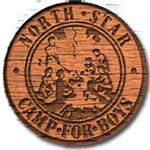Check out this awesome sermonette on environmentalism from counselor Reese Borlin:
After Andy asked me to do this sermonette on environmentalism last afternoon, I spent the rest of the day thinking about the direction I wanted to take it. I had several ideas, and as I wrote down some notes, I remembered something I learned in a community sustainability class I took this past spring.So far, while talking to you all, I have used the word I or me 8 times in just two sentences. And I used it again just there. And there. In the English language, we use the words I and me constantly. When we express ideas, we express them in relation to ourselves. “I am excited for today,” rather than “today is exciting.” “I think that is a good idea,” rather than “that is a good idea.” It permeates our language, and therefore, permeates our culture. Western society is incredibly self-centered. We think of the individual first, then the individual’s role in the group. Yes, it has given us a great deal of individual freedom – however, the consequence is that we think of ourselves first and all of humanity second. I think of my own wants over the needs of the planet. That, right there, is why a climate crisis is upon us.I read a book recently on the lore and history of the Lakota – a tribe of native Americans who live primarily in the state of Washington. One incredibly small yet impossibly big difference between the English language and the Lakota dialect is that there is no word in Lakota for “I.” To me and you, that seems impossible. How do they not have a word for I? How do they express their own ideas, thoughts, wants? The answer is that language and culture are so intertwined that the Lakota do not need to use the word I. They view the universe through a lens of “we.” “We are,” not “I am.” “We” includes the land, the brother tree, the sister lake, the brother eagle, the sister sky. A great Chief of the Lakota Tribe, Chief Seattle, wrote, “Man does not weave the web of life. He is merely a strand of it. Whatever he does to the web, he does to himself.”It is no question that we need to get away from the me, me, me of our world and move towards the global view of “we” to sustain our planet for future generations. Stating this is easy, but how do we move towards this goal? There are two answers. One is easy, one is not.I will start with the hard one. We need to change how we live. If you do not see why, let me explain.There are websites you can visit that will calculate the number of earths it would require if everyone alive lived like you do. It asks questions like; how much do you fly? What kind of place do you live? How much do you drive? How much meat do you eat? How much do you use heat or AC? All these questions determine how much energy and resources it takes to sustain your lifestyle.In the United States, the average is about 4 earths. This means that if everyone on the planet lived like the average American, it would take 4 earths to sustain all of us. You may wonder how the planet still exists, and the answer is that we are using more than our fair share while others use less. I have met people whose number is 6 earths if all lived like they do. I have never met someone in the United States whose number is less than 1 earth. The way we live here is neither sustainable nor fair. Those who live in third world countries use as little as 1/100 of an earth.How do WE fix this inequality? How do WE live a more sustainable lifestyle?A Norwegian philosopher by the name of Arne Naess created an idea called “deep ecology.” In this deep ecology, we adapt our lifestyle to the needs of the planet, rather than adapting the planet to fit our lifestyle. There is a Norwegian word he uses often, the word is “Noysomhet.” In English, this word means, “to be content with frugal yet adequate situations.” We must change our culture of “want” to a culture of “contentedness.”Some, as in all of us sitting here, will have to use less so that others can use more. To be satisfied with using less, we must change our values. To modify our values, we need education. And this is the second answer to sustainability. Yes, school. Education is the helm of the climate movement. Education destroys ignorance. Education destroys hate. It is each of our most valuable tool to helping change the course of our planet.As I wrap up this sermonette, I have a few challenges for each of you. One – try to go as long as you can without saying the word I. As you go through this, think of life in terms of “we.” Second, apply noysomhet to your life. See where you can be content with less. Third, educate yourself. Read books, watch reliable news, and listen to your teachers.In their legends, the Lakota describe the white man as “witches.” They believe that the planet will go through a period of drought, famine, and suffering caused by the greed of these witches as they cut down the forest, overfish the rivers, and use up the land. Are they correct? Maybe. However, after the difficult times, the Lakota say that a group will come together to save the world. They call this group the “rainbow warriors.” Today, I interpret this legend of the rainbow warriors as a group of environmentalists from all backgrounds, all cultures, all colors, all languages, all ages, and all coming together with the goal of making the world livable once again. This task falls on all of us here. I consider myself a rainbow warrior. I look before me here at North Star, and I see a group of people who could join the rainbow warriors, and my final challenge is that each and every one of you make a commitment to do so.Thank you, and noysomhet.


